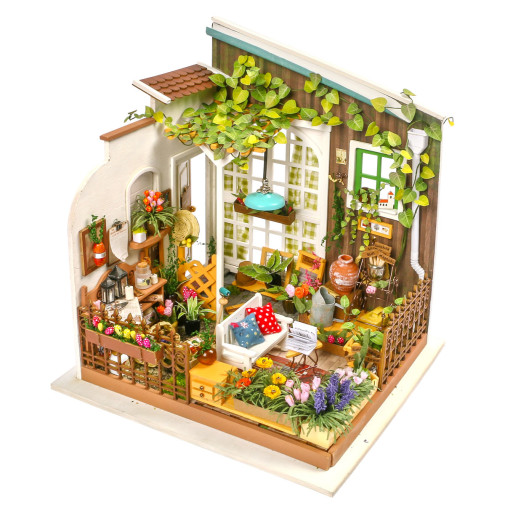We use cookies to make your experience better. To comply with the new e-Privacy directive, we need to ask for your consent to set the cookies. Learn more.
Miller's Garden (DIY Miniature House)
- DIY Mini Indoor Garden: Assemble a charming miniature garden room with Miller’s Garden!
- Realistic Details and Ambient Lighting: Includes furniture, decorations, and battery-powered lights to bring your miniature garden to life
- Perfect for Display: The finished room is ideal for showcasing on a bookshelf, tabletop, or next to plants in your home
Part of the DIY Miniature House series, Miller’s Garden is a dainty model indeed. This set invites you to construct your very own garden room! Plant lovers will appreciate the flower boxes, bits of ornate fencing, and trailing plants all about. It looks just like a garden inside of a home with furniture and decorations mixed in with the surrounding plants. These model rooms look amazing on a bookshelf all lit up with the included ambient lights! Materials are plywood, metal, fabric, and paper. Requires 2 AAA batteries. The finished room measures 7.68 x 7.20 x 8.27 inches. This kit is designed for ages 14 and up as the kit includes hundreds of pieces. ~Sara
Students of all ages with an eye for detail, décor, construction, architecture, and miniatures will enjoy the completeness of these kits. Each element has to be built using the pieces provided. What an exercise in patience! True model-builders will want to do them all! I like that you can select from a variety of levels, from a wee kitchen-corner setting to a complete greenhouse build. Instructions are image-based with very little reading.
I used to have actual dollhouses that were a 1:12 scale (one inch in the dollhouse equaled one foot in real life). The kits seem close to this scale. While the separate kits do not assemble to create an actual dollhouse, you could display them on a bookshelf and create the sense of a dollhouse-type project. You could have a high school art student add a kit as an element of an art credit.
If you have a child who can focus for a long time, they may want to work on their kit non-stop! However, most will choose to complete one or two components at a time. Materials are often cardstock, wood, fabric, with some metal and occasional plastic. Any batteries for lights are included, as well as adhesives and paint. You will need your own scissors. The many small parts make these not safe for young children.
There are currently 3 sizes of kits. The smaller kits in green boxes are the simplest. Light blue boxes are medium size with intermediate challenge. And the largest kits are the most detailed. These are in brown boxes.
| Product Format: | Other |
|---|---|
| Brand: | Rolife |
| Grades: | 9-AD |
| EAN/UPC: | 6946785164008 |
| Length in Inches: | 12.875 |
| Width in Inches: | 8.375 |
| Height in Inches: | 2.375 |
| Weight in Pounds: | 1.9 |

